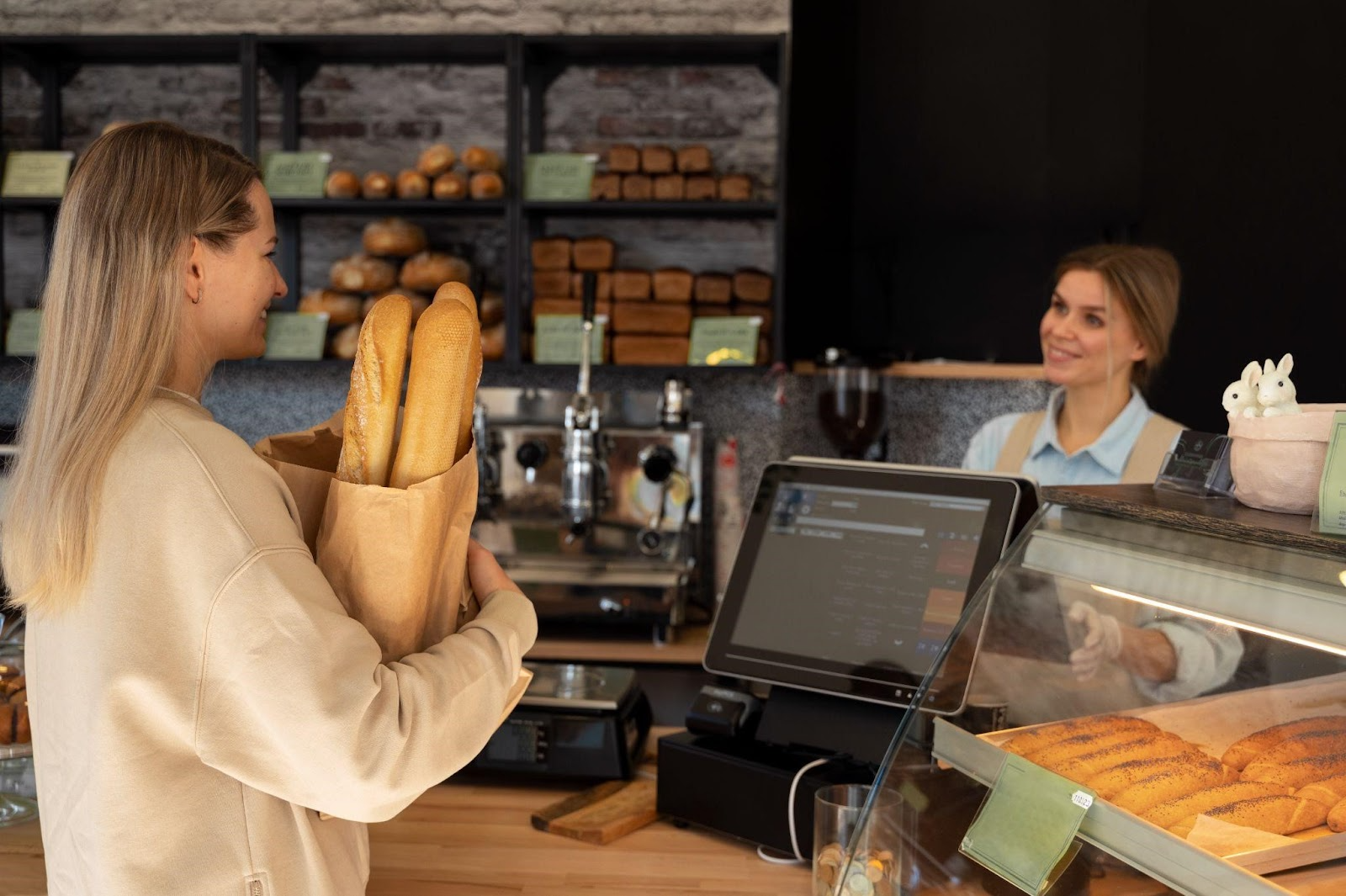
Picture this: you walk into a busy restaurant, and the aroma hits you instantly. But instead of standing in a long queue, you're drawn to a glowing, modern screen that smiles back at you. A few taps later, your customised order is placed—without stress, without pressure, and most importantly, exactly how you like it.
This is not just good technology; it's good psychology.
As self service kiosks for restaurants become mainstream, it's clear that their design goes far beyond functionality. What makes a customer feel calm instead of confused? What keeps queues moving without making diners feel rushed? The answers lie in human behaviour, and the smartest kiosks are designed with psychology at their core.
Let's dive into the psychology that makes a self service kiosk for restaurants not just usable—but irresistible.
First Impressions: The Power of Visual Hierarchy
The human brain absorbs visuals 60,000 times faster than text. That's why, while a purchaser walks as much as a kiosk, what they see first matters immensely.
Successful kiosks comply with clean visible hierarchies:
● Large, appetising pix of bestsellers
● Clear call-to-motion buttons (e.g. "Start Order" or "Tap to Begin")
● Clean, uncluttered layouts
The intention is to create confidence at a look. The faster a person becomes aware of what to do, the less likely they are to abandon the process.
Cognitive overload is a real danger in digital environments. If your self-service kiosk for restaurants displays an excessive number of records—menus, combos, upsells, and reductions—it can cause choice fatigue. Great design makes it easy.
More options mean happier customers, right? Not always.
The paradox of choice suggests that too many decisions lead to anxiety and dissatisfaction. When diners are faced with an overwhelming number of customisations or item variations, they often:
● Choose something safe (and forgettable)
● Take longer, delaying the queue
● Abandon the kiosk entirely
To combat this, the most effective kiosks group choices into digestible steps. They might show 4–6 popular items first, with a "More" option tucked below. They use innovative design to guide choices gently—rather than forcing them on the customer.
Retail experts have long known that the products at eye level sell best. The same principle applies to self service kiosks for restaurants.
Items placed at the visual centre of the screen are more likely to be selected, particularly when time is short, or the user is unfamiliar with the menu. This is where you should position:
● High-margin items
● Combo meals
● Seasonal promotions
This isn't trickery—it's an innovative design rooted in how people browse. By aligning user behaviour with your business goals, everyone wins.
Personalised Advertising Makes the Audience Feel More Connected
Did you ever feel happy when a barista recalls your name or the beverage you like best? In a way, good customer service meets our desire to be recognised.
Today’s kiosks are able to offer gentle personalisation to users.
● Reviewing the history of orders
● Using the user’s name, if they have already logged in through the app
● Asking for “your usual” during your regular visits
It helps create an emotional tie to something that seems like a simple machine at first. If the experience comes across as human, it becomes easier for users to feel comfortable.
With everything automated, showing emotions toward customers is the key to loyalty these days.
Using Colours to Set the Mood in Design
Colour is important from the start of any design project. It greatly affects how people see things and decide upon them.
For example:
● Not surprisingly, many fast food chains use red and yellow because they stimulate people’s desire to eat.
● The color green reminds us of health, freshened air, and environmental care.
● The color blue gives a sense of trust and peace, which is perfect for fine dining and cafes.
A properly designed self service kiosk for restaurants will make use of colour intentionally.
● Marking offers that are time-sensitive with red accents (e.g. “For a limited time only!”, etc.)
● I will suggest some tasty organic meals.
● Use a moderate range of colors to make the background peaceful and feature the food.
As a result, diners find it natural to choose what they like because everything feels right for the brand.
"Would you like to add fries?" is a functional phrase.
"How about a crispy sidekick?" is delightful.
Microcopy—the small bits of text on a screen—can do wonders for engagement. A bit of humour, empathy, or friendliness helps soften the otherwise mechanical nature of the kiosk.
Phrases like:
● "We're getting that ready, hang tight!"
● "Your taste buds are going to thank you."
● "Feeling extra hungry? Add a treat?"
These little moments inject warmth and turn an interaction into a mini experience. They humanise the process and leave a lasting impression—even if the total order time is under two minutes.
Final Thoughts: Designing for the Mind, Not Just the Menu
At first glance, a self-service kiosk for restaurants appears to be a device for faster ordering and staff reduction. But dig deeper, and you'll also see it's a highly effective behavioural touchpoint.
The most successful kiosks don't just look appropriate—they feel good to use. They expect consumer emotions and manual decisions without overwhelming and departing diners feeling on top of things.
In a time when restaurants are juggling charges, labour shortages, and growing customer expectations, self-service kiosks designed with human psychology in mind aren't just green—they're emotionally intelligent.
And in the long run, the most memorable foods aren't just about flavour—they're about how they make us feel. Great kiosk design ensures that the feeling starts long before the first bite.